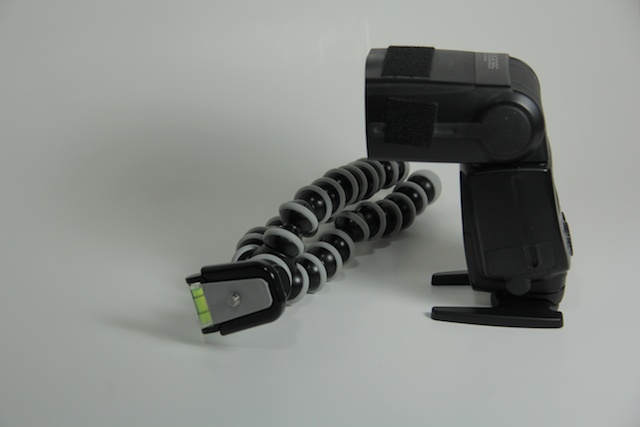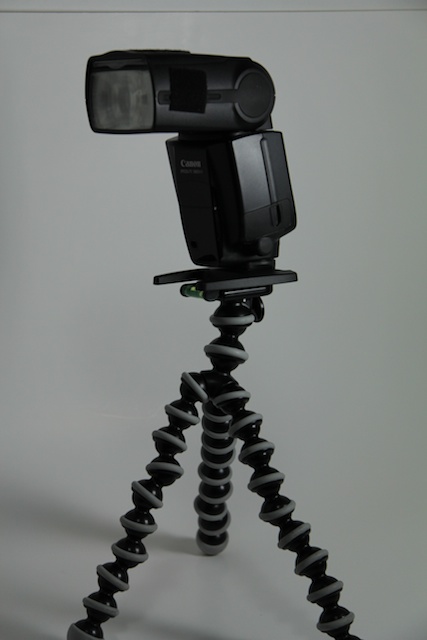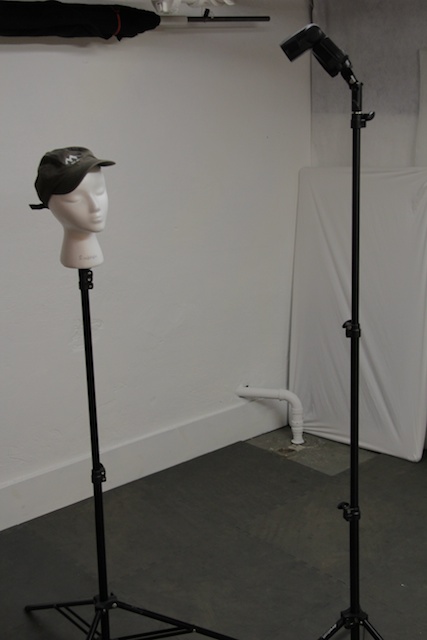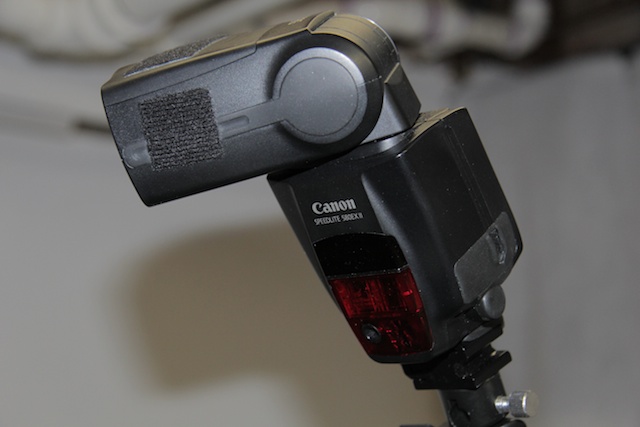








 There's lots you can do with an external flash attached to your camera locked into your camera's hot shoe to make your images look better. The worst thing, of course, is to aim a bare flash directly into your subject's face, because you get very flat and unflattering results. You can, however, bounce the flash or apply modifiers to it, but the ideal way to work with external flash is to take the flash off the camera and position it at a 45° angle from the on-axis position of your camera. Raising the flash up above your subject at a 45° angle improves the lighting even more, though the simple move off axis to 45° is a great start.
I say "simple," but is it? It doesn't seem to be, but with newer Canon cameras (Rebel T4i, T3i, 60D, and 7D) and most Nikon models, it really is. And it is without the need to purchase any additional equipment! I do assume, of course, that you do have an external flash. Before we talk about how you're going to get the camera to "talk" to the flash, let's address how you can position your flash unit off camera. Most flashes come with a small plastic stand with a cold shoe on the top into which you can slide the flash and lock it tight. This stand can be placed on a table, tall stool, or something similar to position it off camera axis at that 45° angle we talked about earlier. But did you realize that on the bottom side of the stand there is usually also a 1/4 plastic screw opening that will let you place the flash stand on a tripod if you have one? Of course, the ideal solution is to have a light stand on which to attach your flash, but if you have a tripod it can, basically, serve as your light stand! This includes, naturally, those little bendable GuerrillaPods from Joby that will let you mount your little flash stand and then wrap its flexible legs around the top of a chair or anything that they will fit and raise your flash up higher.
There's lots you can do with an external flash attached to your camera locked into your camera's hot shoe to make your images look better. The worst thing, of course, is to aim a bare flash directly into your subject's face, because you get very flat and unflattering results. You can, however, bounce the flash or apply modifiers to it, but the ideal way to work with external flash is to take the flash off the camera and position it at a 45° angle from the on-axis position of your camera. Raising the flash up above your subject at a 45° angle improves the lighting even more, though the simple move off axis to 45° is a great start.
I say "simple," but is it? It doesn't seem to be, but with newer Canon cameras (Rebel T4i, T3i, 60D, and 7D) and most Nikon models, it really is. And it is without the need to purchase any additional equipment! I do assume, of course, that you do have an external flash. Before we talk about how you're going to get the camera to "talk" to the flash, let's address how you can position your flash unit off camera. Most flashes come with a small plastic stand with a cold shoe on the top into which you can slide the flash and lock it tight. This stand can be placed on a table, tall stool, or something similar to position it off camera axis at that 45° angle we talked about earlier. But did you realize that on the bottom side of the stand there is usually also a 1/4 plastic screw opening that will let you place the flash stand on a tripod if you have one? Of course, the ideal solution is to have a light stand on which to attach your flash, but if you have a tripod it can, basically, serve as your light stand! This includes, naturally, those little bendable GuerrillaPods from Joby that will let you mount your little flash stand and then wrap its flexible legs around the top of a chair or anything that they will fit and raise your flash up higher.
So, now we have our flash off the camera and on some sort of stand, but how does the camera make a connection to the flash? Here, the ideal way that helps you avoid some issues is to use radio controlled triggers to set up the communication channel. And, ultimately, that is where you may want to go, but you don't have to as, assuming your camera model is among those mentioned above, your camera can connect to the flash wirelessly using built-in infrared signaling. The purpose of this post is to make you aware that you CAN do this, not to give you the step-by-step process, because it will differ from camera system to camera system.
Basically, however, all solutions involve using your built-in, pop-up flash to trigger your off-camera flash. And you do this without making the light from the built-in flash part of the resulting image. The built-in flash merely sends out a pre-flash signal to your external flash sending it information about the shot and the "fire" command. That is, in fact, the beauty about this solution: since it is system supported (e.g., Nikon, Canon), it supports the E-TTL (Canon) and iTTL (Nikon) information relay. And, it's free! You can work in Manual flash, as well, controlling your flash power settings right from your camera without even touching your flash unit!
Directions for Canon systems: http://www.thephoblographer.com/2010/10/20/an-introduction-to-canons-wireless-flash-system/ Directions for Nikon systems: http://strobist.blogspot.com/2007/06/nikon-cls-tutorial-video.html
In addition to teaching scheduled photography classes throughout the year, I am also available to do one-on-one tutoring or small group lessons designed to meet YOUR needs and what you want to learn in the area of photography, using flashes, or the use of Apple products and software. Give yourself the gift of learning: http://www.infotor.com/photoclasses!